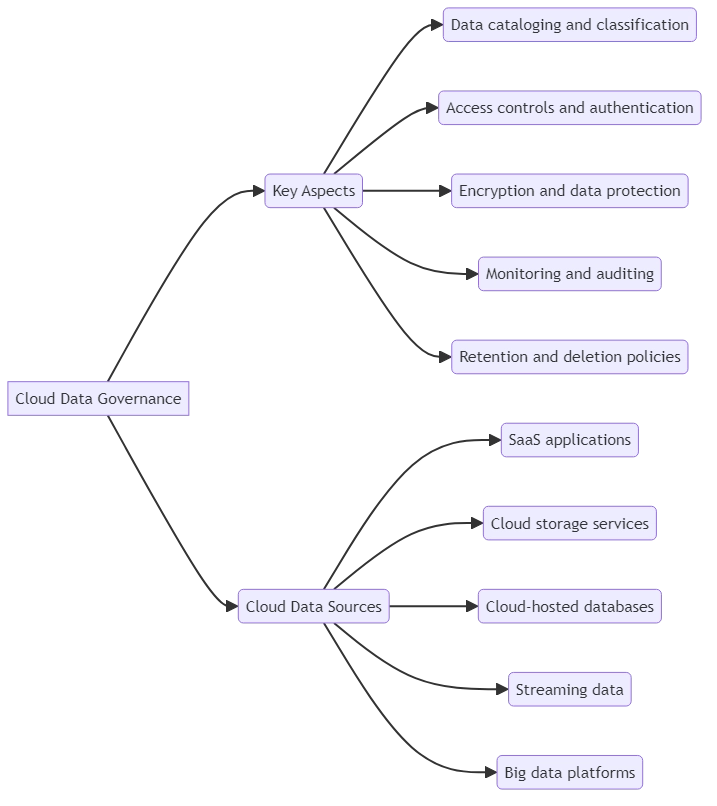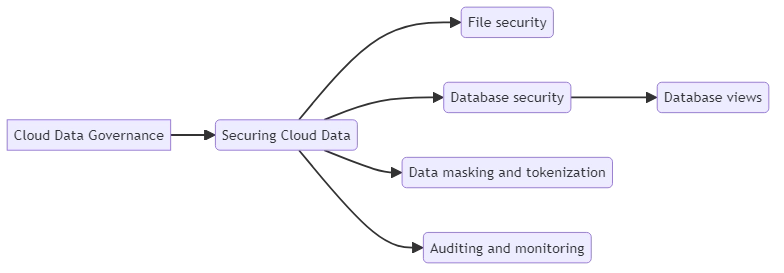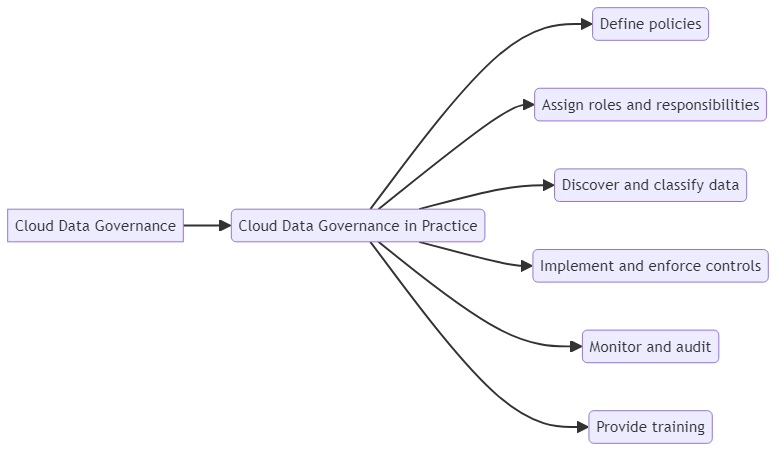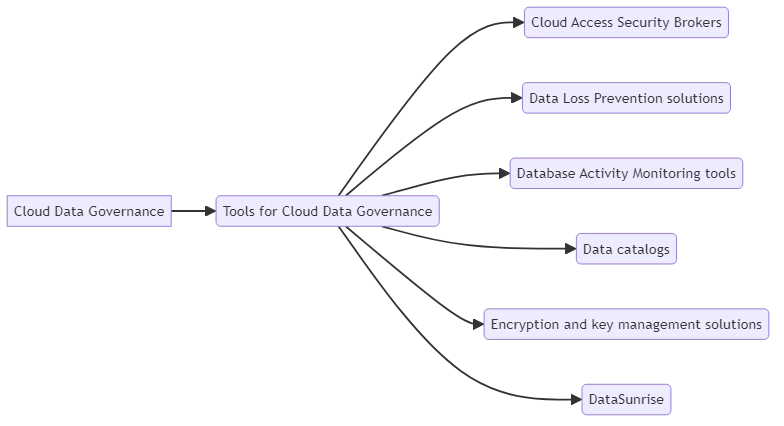
Cloud Data Governance

Introduction
Today, many organizations are storing their data in the cloud. This is because it is easier to scale, saves money, and offers more flexibility. Storing and processing data in the cloud presents new challenges for data governance.
Cloud data governance includes rules and tools to ensure the safety of data stored in the cloud. It also involves following regulations and properly managing the data throughout its lifecycle. In this article, we will discuss the basics of cloud data governance. This includes important ideas, tips for success, and tools to help you manage your data effectively in the cloud.
What is Cloud Data Governance?
Cloud data governance involves managing the availability, usability, integrity, and security of data stored in the cloud. Establish policies, roles, and responsibilities to ensure that we handle data properly and in compliance with regulations. The goal of cloud data governance is to maximize the value of an organization’s data while minimizing risks.
Some key aspects of cloud data governance include:

- Data cataloging and classification to understand what data you have and its sensitivity level
- Access controls and authentication to ensure only authorized users can access data
- Encryption and data protection to secure data both at rest and in transit
- Surveillance and inspection keep track of the usage of data and its users.
- Retention and deletion policies to manage the data lifecycle
Organizations use cloud data sources, including data from various cloud-based platforms:
- SaaS applications like Salesforce, Workday, Office 365, etc.
- Cloud storage services like Amazon S3, Azure Blob Storage, Google Cloud Storage
- Databases hosted in the cloud, both relational and NoSQL
- Streaming data from IoT devices and APIs
- Large-scale data platforms like Hadoop and Spark operating in the cloud
A good plan should think about various data sources. It should ensure that we securely manage data across all sources. This requires deep visibility into your data landscape.
Securing Cloud Data
Security is a top concern for cloud data governance. Organizations need to ensure they protect sensitive data from unauthorized access or breaches. Here are some key considerations:

File Security: When you save files in the cloud, like S3 or Blob Storage, you need to set up access controls. Access controls restrict who can view the files. Tools like Cloud Access Security Brokers (CASBs) can help monitor file activity and detect anomalous behavior.
Example: Configuring S3 bucket policies to restrict access to specific IP ranges or requiring MFA.
Database Security:
When using databases in the cloud, it’s best to use database views to restrict access to sensitive data. Views allow you to define specific queries that limit the data returned.
Example: Creating a view that masks PII by only selecting non-sensitive columns:
CREATE VIEW SafeCustomerView AS SELECT CustomerID, FirstName, LastName, Country FROM Customers;
Data Masking and Tokenization: Masking or tokenizing sensitive data before storing it in the cloud can greatly reduce risk. Masking irreversibly obfuscates data while tokenization substitutes a sensitive value with a non-sensitive placeholder.
Auditing and Monitoring: Continuously monitoring cloud databases and storage for suspicious activity is essential. Centrally collect and analyze database audit logs for anomalies.
Example: Using Azure SQL Database Auditing to track database access attempts.
Cloud Data Governance in Practice
Implementing cloud data governance requires people, processes and technology working together. Some key steps include:

- Define policies: Work with stakeholders to establish data governance policies covering things like data classification, retention, access controls, acceptable use, etc.
- Assign roles and responsibilities: Designate data owners, stewards, custodians and other roles. Clarify the responsibilities for governing data.
- Discover and classify data: Use automated tools to scan your cloud environment and tag data based on sensitivity. Knowing what you have is a prerequisite to securing it.
- Implement and enforce controls: Put technical controls in place to enforce your policies. This includes things like encryption, access control, masking, etc.
- Monitor and audit: Continuously monitor data activity for misuse and compliance. Conduct regular audits to ensure controls are working as intended.
- Provide training: Educate employees on proper data handling procedures and their responsibilities for safeguarding data.
Tools for Cloud Data Governance
A variety of tools are available to help automate and streamline cloud data governance, including:

- Cloud Access Security Brokers (CASBs) for visibility and control over cloud apps and data
- Data Loss Prevention (DLP) solutions to identify and protect sensitive data
- Database Activity Monitoring (DAM) tools to track and audit database access
- Data catalogs for tagging and classifying data assets
- Encryption and key management solutions to protect data at rest and in motion
One noteworthy tool is DataSunrise, which provides a suite of flexible data governance capabilities including security, audit, masking, and compliance features. Their tool makes it easy to implement fine-grained access controls, mask sensitive data, and generate compliance reports.
Summary and Conclusion
Cloud data governance is an essential practice for any organization storing or processing data in the cloud. You can keep your cloud data safe and valuable by setting up the right policies, roles, and technical controls.
Cloud platforms have good security measures. Using these measures effectively is crucial for organizations. You should do this as part of a comprehensive governance strategy. This requires discovering and classifying data, implementing and enforcing controls, and continuously monitoring and auditing data activity.
Companies can use the cloud to protect their important data by following the right cloud data governance practices. Visit DataSunrise’s website to schedule an online demonstration. Learn how they can simplify and automate your cloud data governance procedures.
